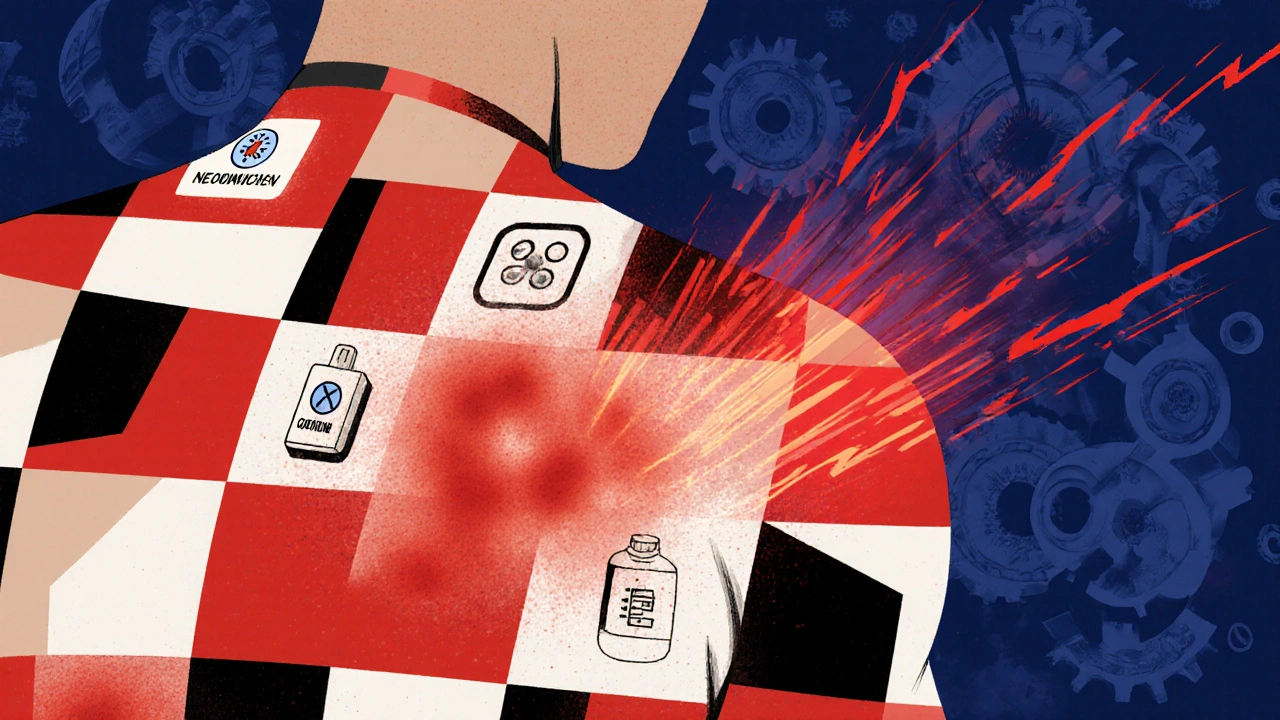Topical Medication Allergy: What It Is and Which Products Could Trigger It
When your skin reacts badly to a cream, ointment, or lotion you applied, it’s not always irritation—it could be a topical medication allergy, an immune response to an ingredient in a skin-applied drug or treatment. Also known as allergic contact dermatitis, this isn’t just a rash—it’s your body saying no to something in the product. Unlike irritation from harsh chemicals, a true allergy means your immune system has learned to attack that ingredient, even if you’ve used it safely before.
Common culprits include corticosteroid creams, anti-inflammatory treatments used for eczema, psoriasis, and rashes, which sometimes contain preservatives like benzalkonium chloride or fragrances like lanolin. Neomycin, an antibiotic found in many over-the-counter ointments, is another frequent trigger. Even something as simple as aloe vera or tea tree oil can set off a reaction in sensitive people. These aren’t rare cases—studies show over 20% of people with chronic skin conditions develop an allergy to one or more topical ingredients over time.
It’s easy to miss because the reaction looks like a flare-up of your original condition. You apply the cream for your eczema, and instead of calming down, your skin gets worse. Redness spreads. It itches more. Blisters form. You might think the treatment isn’t working—but it could be causing the problem. The key is timing: if symptoms show up 24 to 72 hours after applying the product, it’s likely an allergy, not irritation.
Some topical meds hide allergens in plain sight. Antibiotic ointments, antifungal creams, and even sunscreens labeled "hypoallergenic" can contain hidden triggers like parabens, formaldehyde releasers, or propylene glycol. If you’ve had repeated reactions to different products, you’re not just unlucky—you might have a pattern. Patch testing by a dermatologist can identify exactly what you’re reacting to, so you know what to avoid going forward.
What you’ll find in the posts below are real, practical guides on how to spot these reactions before they turn into something worse. You’ll learn which medications commonly cause skin allergies, how to read ingredient labels like a pro, and what to do if your skin starts burning after applying a treatment you trusted. These aren’t theoretical tips—they’re based on patient experiences, clinical warnings, and the kind of details you won’t find on drug packaging. Whether you’re managing eczema, psoriasis, or just trying to treat a minor cut without triggering a reaction, this collection gives you the tools to stay safe.





